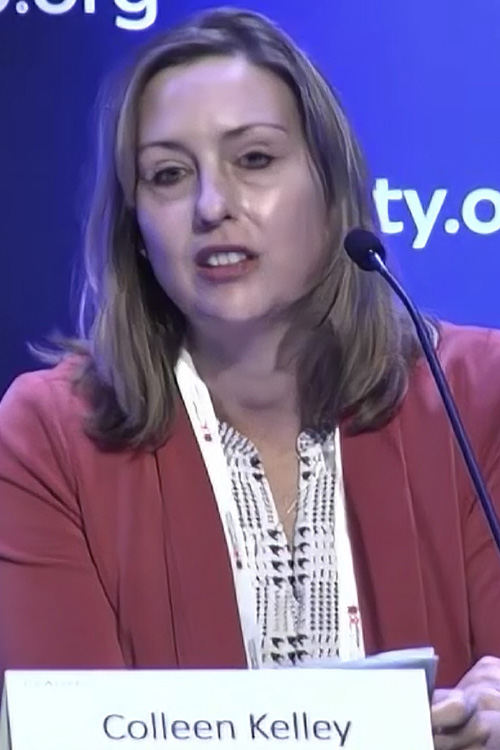Insights on a game-changing drug from one of the lead clinicians testing lenacapavir as PrEP
A six-month shot for preventing HIV has been making headlines lately because of how effective it’s been proven (known as PrEP) in a series of clinical trials called PURPOSE. The drug, lenacapavir, is already FDA approved as HIV treatment, but only for people living with HIV who have few other treatment options left. The HIV prevention results have been so promising, lenacapavir’s maker, Gilead Sciences, plans to apply for approval as long-acting PrEP in the U.S. and other other countries by year’s end.
In June, it was announced that the PURPOSE 1 study had come to an early end because lenacapavir had an unprecedented 100% success rate in protecting cisgender women from HIV. Interim results from PURPOSE 2, among cisgender gay, bisexual, and other men, transgender women, transgender men, and gender diverse individuals aged 16 years or older who have sex with partners assigned male at birth, found only 2 cases of HIV acquisition among the 2,180 participants, bringing that study to an end in September.

Colleen Kelley, MD, MPH, an assistant professor at Emory University, is one of the principal investigators in PURPOSE 2 study. She’s helped present the study’s findings, including at the HIV Research 4 Prevention conference held the week of Oct. 7 in Lima, Peru. She spoke with POSITIVELY AWARE in a phone interview about lenacapavir, the PURPOSE study findings and the future of long-acting treatment and prevention of HIV.
Kelley discussed the lessons learned about injection site reactions, other side effects and what can be done about them. Injection site reactions were reported by about half of the clinical trial participants—primarily pain or soreness where the injection was administered. This has been a complaint among people receiving long-acting injectable medications as well. The discomfort goes away after a few days and the occurrence with the injections has diminished over time. About half of the clinical study volunteers said they could feel a nodule, which is a concentration of the medication, referred to as a drug depot, which gradually dissipates.
POSITIVELY AWARE: What can providers start to do as they think about administering lenacapavir, in terms of counseling or patient education?
First, patient education. The nodule is the drug depot and is where the drug lives and will seep out into the body over time. And it’s because of that nodule that we get this six-month protection from lenacapavir. So education of participants and patients around what to expect goes a long way [to address] their sensation of discomfort.
The other thing is that over time, with lenacapavir injections, we’ve learned a better injection technique. In some cases, we think that the injections were being delivered a little too superficially and not into the subcutaneous space [also known as the hypodermis; it’s the deepest layer of skin and is located beneath the dermis]. And so quite a bit of education went on into the study sites to ensure that they were getting subcutaneous space injections, and that included with the angle of the injection.
And then finally, we learned throughout the course of the trial that things like ice at the injection site, prior to the injection, significantly reduced the sensations of pain from injections. Overall, the take-home point is we got better at giving injections, and that that is why there was a reduction in the reporting of injection site reactions over the course of the trial. Participants knew what to expect and that, overall, things improved with respect to reporting those side effects. It’s interesting that this has been seen with other injectable medications as well. It seems to be something that as people learn what to expect, as people learn how to give better injections, those things improve over time.
With lenacapavir, are there any metabolic changes, like with cholesterol levels?
Cholesterol was checked over the course of the trial and did not come out as an adverse effect [or negative reaction] in the initial analyses. We'll wait for the final reports to come out in publication, but at this point in time, it does not appear to affect cholesterol.
Will other underrepresented populations be studied, or how will they be considered for trials and testing?
People who inject drugs is the focus of PURPOSE 4 study. That is another important population that has been left behind with respect to PrEP studies. [PURPOSE 3 is being conducted in U.S. among adult cis women.]
What about older people? Do we need to consider how lenacapavir works in people age 50 and older?
There was no upper age limit for inclusion in PURPOSE 2, There's no reason to think that there is an age concern with lenacapavir—74 was the age of the oldest person in the trial that got lenacapavir.
During PURPOSE 2 there were two cases of HIV diagnosed among study participants. Any thoughts about how this might inform HIV screening strategies for long-acting injectable PrEP?
That is a great question. We are waiting on more of the data around HIV diagnostics—how the cases [of HIV] were diagnosed. We know that injectable cabotegravir [another long-acting injectable medication, FDA approved for both HIV prevention and treatment] can cause what we call ‘flickering’ HIV tests and long-acting early viral inhibition syndrome, or LEVI syndrome [a condition that can occur in people who contract HIV while taking injectable cabotegravir as PrEP].
Can you talk a little bit about LEVI syndrome?
LEVI syndrome is what was seen with injectable cabotegravir. It stands for long-acting, early viral inhibition, meaning that when people received their cabotegravir injection, they were already HIV positive, but their diagnostic tests did not reveal that, or that people acquired HIV while they were getting injectable cabotegravir. Cabotegravir is such a potent medication that it actually suppresses viral replication. And so in those people, they basically had a kind of smoldering, low-level viral replication for a period of time, sometimes for weeks or longer. And because of that, their diagnostic tests, their antigen antibody tests, had very funky results, and sometimes even their viral loads had very funky results. They’d be positive on one check and then negative on the next. So, in some cases it was difficult to determine if someone who was on cabotegravir was seroconverting. And there were delays in a final diagnosis of HIV because of that effect. That LEVI effect has not been seen to date in lenacapavir. And I stress to date because it’s so early in lenacapavir for prevention.
What about lenacapavir for treatment?
Lenacapavir has only been approved for salvage HIV treatment at this point in time—it's not approved for patients who are naïve to antiretrovirals. I will tell you, it is being increasingly used, though, in combination with Cabenuva, or cabotegravir + rilvirine [the generic components that make up brand name Cabenuva], for people who are unable to adhere to oral regimens, and who may have some background HIV resistance in their virus. It kind of enables them to have an all-injectable regimen. We have a significant minority of patients who are not able to adhere to oral antiretrovirals, who, when given opportunity, in the unusual cases where we've been able to get them to an all-injectable regimen, they do really, really well.
I know that you can't speak for Gilead, but would it not be logical to conclude that with lenacapavir being so successful at preventing HIV, that you'd want to look at using it for broader HIV treatment, not just for heavily treatment-experienced people?
I have no idea what [Gilead is] thinking in that in that realm. I do know that there is hope that we could someday pair lenacapavir with another super-long-acting drug, such that it would allow for every-six-month injections for treatment. I mean, could you imagine if we could treat people with HIV with injections just twice a year? I think that that is on the horizon. Like you said, I can't speak for Gilead, but I think that these long-acting injectables are really going to change the face of HIV treatment and prevention, and patients want them. Patients are clamoring for injectable agents. Not all patients, but a lot of patients are really, really interested in injectable agents.
Oral medications are being developed that would only need to be taken every two weeks, monthly, and even longer. Whether it’s shots or pills, longer-acting seems to be the way things are going.
I’m not on the treatment side involved with any of those studies, but yes, you're absolutely right. The future is long-acting. Some people are needle-averse, and for those folks, they may elect to stay on an oral regimen. But there are lots of folks who are really excited about the opportunity to have an injectable regimen where they don't have to take pills on a regular basis.
What would you want to say to care providers about what's coming next with regard to lenacapavir, and perhaps more broadly, about long-acting injectables?
Both on the treatment and prevention side, access to long-acting injectables has been very limited, and in the U.S., it’s because of our complex insurance approvals and payer status that it is burdensome, I think, for clinics to take on injectables. It takes person power [staff hours]. It takes working with your billing departments, your prior approval departments; or if you don’t have those departments, figuring out who on your staff is going to be able to do all that, and so it is a tremendous investment on the clinic side to figure out how to implement these. I do strongly believe that they are an important part of our future in HIV prevention and treatment. So, any effort that’s made now to figure out how to implement them will ease implementation in the future, as we get more options for injectables, and as we get longer-acting options as well.
At the HIV Research4Prevention press conference you said, ‘the researcher’s greatest role is to join with advocates and the community to ask and demand that the drug is available to the people who need it most.’ What does that look like? And how can researchers work collaboratively with community advocates?
I’m also the vice chair of the HIVMA [HIV Medicine Association]. We do a lot of advocacy and partnership with community to understand what the barriers are to access HIV treatment and prevention services, and work with our our governmental agencies, to work with our health care systems, to advocate to our insurance companies to improve and ease access to these lifesaving and life changing medications. Our job as researchers is to listen to the patients that we see, the community, the advocates that we engage with, and raise our voice right alongside them—I need these medications to treat my patients, and available to them without barriers. It’s absolutely our job to stand alongside and raise our voices as well.
Gilead has signed licensing agreements with six drug manufacturers that will allow the companies to make and sell a generic version of lenacapavir in 120 countries around the world and in Africa, but Latin America has been mostly left out, even though they’re one part of the world that is seeing an increase in HIV cases. Latin America has come out short on that deal.
They do. Although I will say what I've heard from Gilead is that they are working on that. What they've released so far [the licensing agreement with six drug manufacturers] is just the first step. Now we need to hold them to that.


